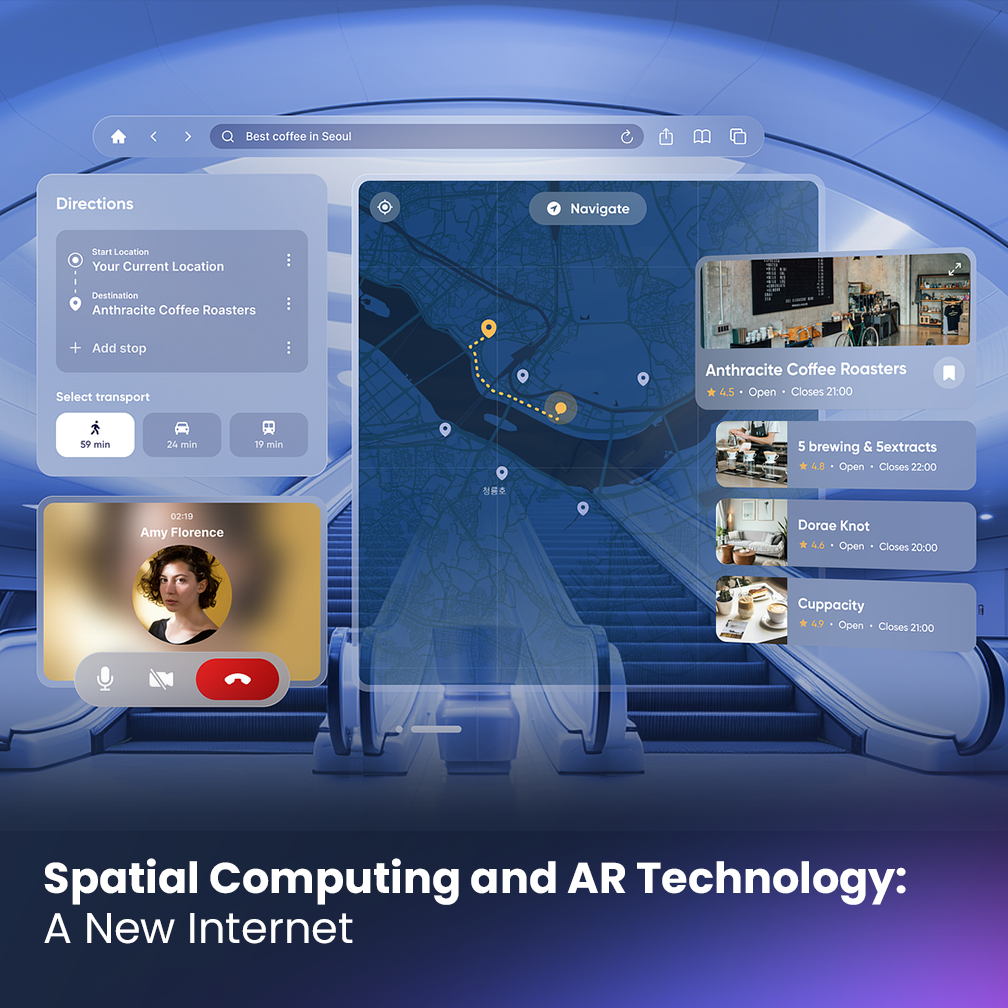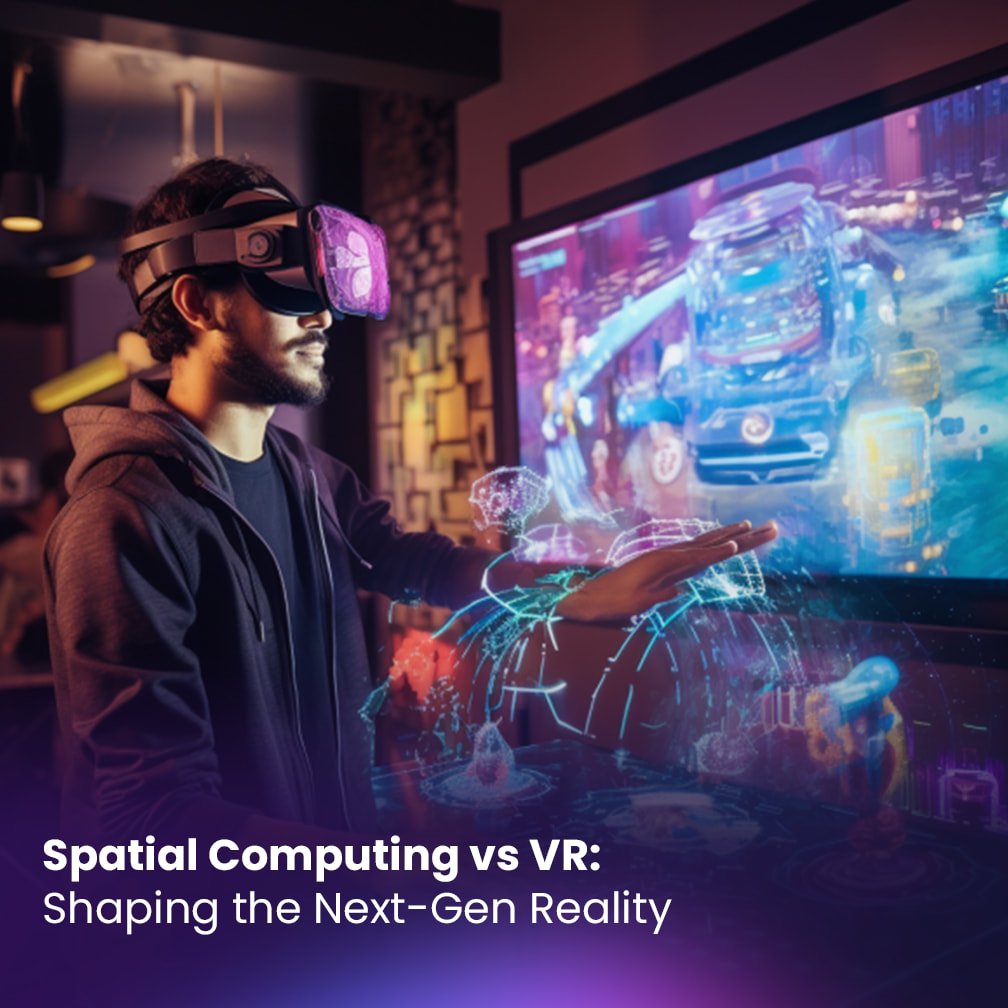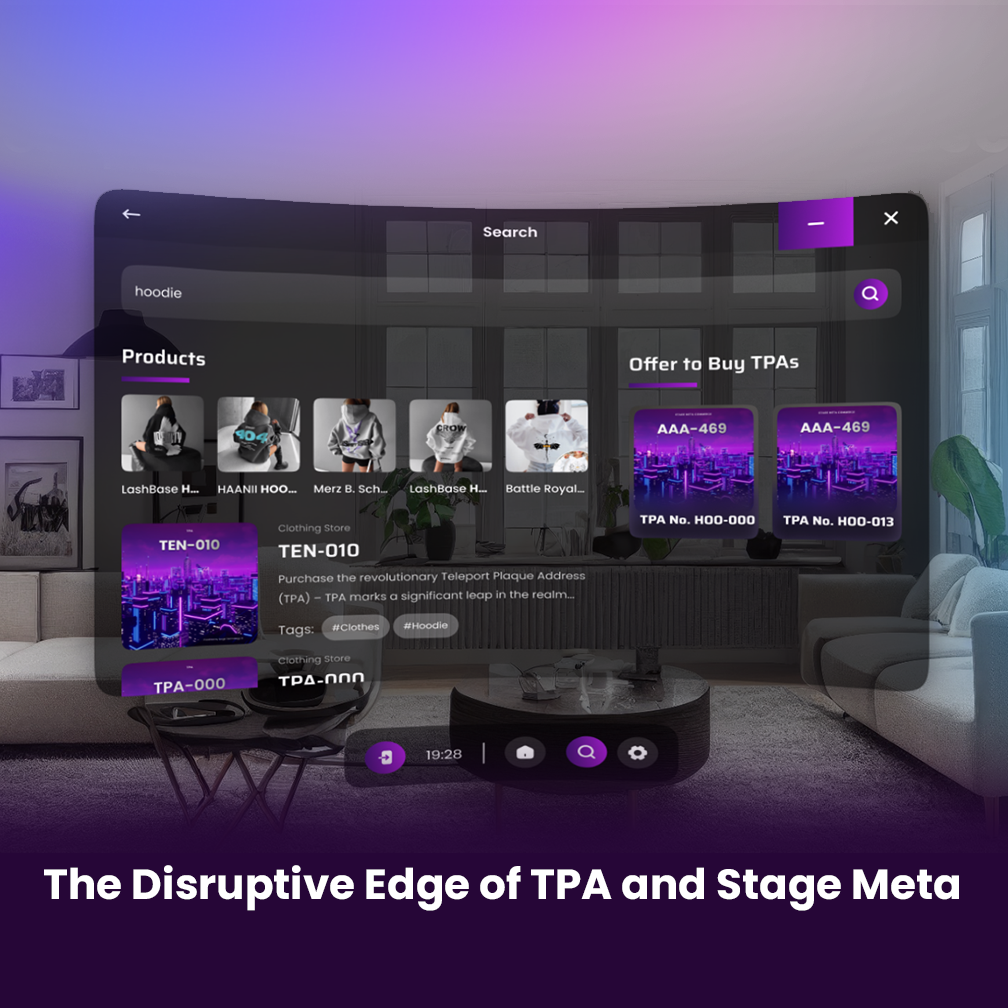Spatial Computing and AR Technology: A New Internet

Estimated reading time: 4 minutes
We are living in an age of digital transformation, where virtual worlds and augmented reality (AR) offer users the opportunity to explore environments that go beyond the physical world. While these technologies share similarities, they also have distinct differences that can bewilder newcomers. In this blog post, we will break down the key differences between spatial computing and AR, and discuss the potential of each technology.
We will also look at some of the benefits that come with exploring these cutting-edge virtual worlds. By the end, you’ll have a better understanding of how spatial computing and augmented reality are changing our world and what opportunities they may bring to users in the future.
Table of contents
What is Spatial Computing?
Spatial computing is the mix between the real and digital world that allows users to explore interactive 3D environments. It is accessed through virtual reality (VR) hardware such as the Apple Vision Pro or Meta Quest, which allow users to move around within the environment by walking, running, or flying in any direction. The content within spatial computing can range from digital art galleries and game worlds, to educational material and interactive social spaces.
Accessibility
Spatial computing is accessible to anyone with a VR headset and an internet connection. While the hardware can be expensive, there are now more affordable options available for those who want to explore virtual worlds without breaking the bank. Additionally, some platforms such as High Fidelity offer free accounts to users who don’t want to purchase a VR headset.
Content and Experience
The content within spatial computing can range from digital art galleries and game worlds, to educational material and interactive social spaces. Users are free to explore these environments as they wish, with the ability to interact with other users in real time and create their own personal avatars. Additionally, developers have the ability to create custom experiences that can range from virtual concerts and movie theaters, to educational games and simulations.
What is Augmented Reality?
Augmented reality (AR) is a technology that overlays digital objects onto physical spaces, allowing users to interact with these virtual objects in their physical environment. Unlike the spatial computing, AR does not require a headset to access, as it uses smartphones and tablets instead.
Accessibility
AR is more accessible than spatial computing, as it requires no additional hardware other than a smartphone or tablet. Additionally, there are now numerous apps on both iOS and Android devices that allow users to explore AR worlds without any additional setup.
Content and Experience
The content within the AR world is typically more limited than in spatial computing, as it is limited by what a device’s screen can display. However, some apps have started to use cloud-based rendering to display more complex 3D environments. Additionally, developers are now creating unique AR experiences such as virtual photoshoots and scavenger hunts.
The Difference Between Spatial Computing and AR
The main difference between spatial computing and AR is in their accessibility and content. Spatial requires additional hardware to access, while AR only needs to use any smartphone or tablet. Additionally, the content within spatial computing is more expansive and varied than in AR, as it allows for full 3D environments and interactive social spaces.
We have talked more in-depth about the differences between VR and AR in the past.
How are Spatial Computing and AR Impacting Our World?
Spatial computing and AR are both changing how we interact with our physical environment. Spatial computing is allowing users to explore virtual worlds, while AR is bringing digital objects into our physical world. As both technologies evolve, they will have a profound impact on how we experience and interact with the world.
Conclusion
In conclusion, spatial computing and augmented reality are two very different technologies that are impacting our world in different ways. Spatial computing requires additional hardware to access and offers users a more expansive and varied experience, while AR is more accessible and is typically limited to what can be displayed on the device’s screen. Both technologies are changing how we interact with our physical environment, bringing new possibilities for exploration, education, and entertainment.








